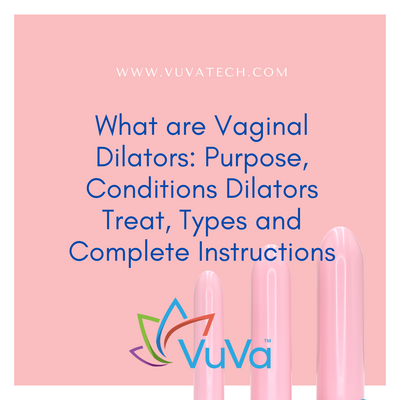
| Tara Langdale
Does Vulvodynia Cause Discharge? Symptoms & Treatments
Women with vulvodynia often wonder if vaginal discharge is caused by vulvodynia. Vulvodynia, known as the burning vulva syndrome, causes pelvic pain, burning, and inflammation for millions of women worldwide. In most cases, there's no identifiable cause.
Vaginal discharge is normal for women with or without vulvodynia, yet there could be abnormal vulvovaginal secretions. For the most part, the unhealthy release usually comes from another underlying condition, not from vulvodynia. Yet vulvodynia can cause an increase in discharge that may be concerning.
Vulvodynia and Discharge
The National Vulvodynia Association's Guide to Vulvodynia outlines that each woman's body is different and vaginal discharge varies. The first step is understanding the vulvar anatomy and its essential role. In essence, the vulva provides the necessary protection for a woman's vagina, vestibule, and urinary opening. All of which are the heart of a woman's sexual response.
The vulva includes the following female genitals:
- Clitoris (above the vaginal opening)
- Labia minora (inner lips)
- Labia majora (outer lips)
- Vestibule (the area around the vaginal opening)
- Perineum (space between the vulva and anus)
The vulva and vagina have different types of tissue that stretch and expand for various reasons. For example, to accommodate a penis during sexual intercourse or expanding while giving birth. Vaginal tissue also has different secretions and odors, depending on different factors. Most of these are expected; however, some can become abnormal.
Normal Vaginal Secretions
The vulvar tissue regularly releases moisture and changes during a woman's menstrual cycle or when sexually active. Secretions come from different areas, including cells in the vaginal walls, certain glands, and mucus from the cervix.
Vaginal discharge is normal, and the amount varies with hormone levels. For example, ovulation (release of an egg) increases vaginal discharge. The color of the secretions changes during the menstrual cycle and may sometimes be clear and, other times, faintly yellow or milky white.
However, if you take birth control pills, the volume doesn't change at all. The steady flow of estrogen and progesterone in the oral contraceptives keeps the amount the same. You must become familiarized with the amount and colors that are normal for you.
Abnormal Vaginal Discharge
As mentioned, vaginal discharge is usually normal, but certain types of discharge can indicate an infection. Abnormal discharge may be foul-smelling, yellow or green, or chunky inconsistency.
The most common reason for abnormal discharge is a bacterial or yeast infection. Yeast infections also come with itchiness and vaginal discharge that's cottage cheese-like. Abnormal discharge can come from the following conditions:
- Bacterial vaginosis (common bacterial infection)
- Lichen planus (vulvovaginal disorder)
- Trichomoniasis (infection caused by a single-celled organism)
- Gonorrhea and chlamydia (sexually transmitted diseases)
- Pelvic inflammatory disease (PID) (a bacterial infection that spreads up the vagina)
- Human papillomavirus (HPV) (infection caused by sexual contact)
- Vulvodynia (burning and vaginal itching in the vulva)
Symptoms of Vulvodynia
Women with vulvodynia typically have specific symptoms, including vulvar pain that ranges from uncomfortable to searing. Often women report the pain as chronic burning. It results in physical, emotional, and psychological stress, and the following symptoms:
- Burning
- Stinging
- Irritation
- Itching
- Pain
- Rawness
- Discharge
It's common for vulvodynia to become aggravated by sexual intercourse, sitting for long periods, or during leisure activities, such as horseback riding.
The American College of Obstetricians divides pain syndrome into two types:
-
Generalized vulvodynia: The pain occurs throughout the vulva and may come and go or become chronic.
- Localized vulvodynia: The pain is "localized" to a particular area and triggered by touch, tampon insertion, or during sexual intercourse.
If you're experiencing any of the above signs, make an appointment with a healthcare professional for diagnosis.
Treatment of Vulvodynia
The vulvar skin treatment may depend on the type of pain but may include invasive procedures and natural remedies, such as vaginal dilators.
Medications
The pain of vulvodynia can be mitigated by taking pain-blocking medications, such as tricyclic antidepressants, anticonvulsants, opioids, and topical medications. Medications help reduce the pain but don't solve the problem of vulvodynia.
Surgery
Women with chronic Vulvar Vestibulitis Syndrome or Provoked Vestibulodynia may choose to have surgery. The surgery removes a portion or all of the vestibule and the hymen. It has a 60-96% success rate, but dilator therapy is commonly recommended to help improve pelvic floor muscle issues remaining after surgery.
Nerve Block Injections
One method to relieve pain in the pelvis is to receive a pudendal nerve block injection that uses a local anesthetic. The shot numbs the nerve and disrupts the nerve endings that signal pain. Typically women receive a series of injections over a few days or weeks apart, given intravaginally or in the epidural space in the lower back.
Vaginal Dilation Therapy
One natural remedy to ease chronic pelvic pain from vulvodynia is physical therapy using vaginal dilators. Trusted by obstetricians and gynecologists to strengthen pelvic floor muscles and help with a wide range of vulvovaginal disorders. When the pelvic floor muscles become weak, have scar tissue, or aggravated by a condition such as vulvodynia, vaginal dilators are a natural method that provides long term relief. There are no side effects and can easily complement other treatment measures, such as medication, nerve block injections, or surgery.

Other Options
Pain specialists often recommend short term and long term actions women can take to avoid vulvodynia triggers and manage pain, including:
- Dietary Changes (avoid foods with a high-oxalate content)
- Clothing Options (wear 100% cotton underwear)
- Cognitive-behavioral therapy (CBT)
Home remedies, such as dietary changes and clothing options, used in conjunction with vaginal dilators may help cure vulvodynia.
Diagnosis and Management
Treating vulvodynia first begins by making an appointment with a family physician to discuss the chronic pain and discharge. Your doctor will usually conduct a pelvic exam for signs of infection and other causes of your symptoms during the appointment.
If no sign of infection, vaginal secretion samples may be sent to a laboratory to test for an infection. The doctor may also give you a Cotton Swab Test. This test uses a moistened cotton swab to check for tenderness in the vulva that may be causing pain.
Vulvodynia causes terrible, burning pain in the vulva. It may also cause abnormal vaginal discharge. If you suspect you are suffering from vulvodynia, see a specialist as soon as possible. In the meantime, discover the natural healing power of vaginal dilators.
Do you need to order vaginal dilators so you can start your pelvic floor therapy process? Made in the USA. Visit www.vuvatech.com
VuVa Helpful Links:
How do Neodymium Vaginal Dilators work?
7 Reasons for a Tight Vagina and How to Loosen
How to Relax Vaginal Muscles, Vaginismus & Sex
Vaginal Stretching - Keeping in Shape with Dilators
Do Dilators Really Work? Yes, and They can Improve Your Sex Life!
Shop for VuVa Vaginal Dilators
Tara Langdale Schmidt is the inventor of the VuVa Dilator Company. She has pelvic floor dysfunction herself and wanted to create a dilator set that is made in America that women can trust. VuVatech has been in business since 2014 and has helped over 50,000 women all over the globe. She patented the Neodymium Vaginal Dilator, that is clinically proven to help with blood flow and nerve pain.
Podcast Episode 22: Tara Langdale-Schmidt
What’s on Your Vagenda? Click here















